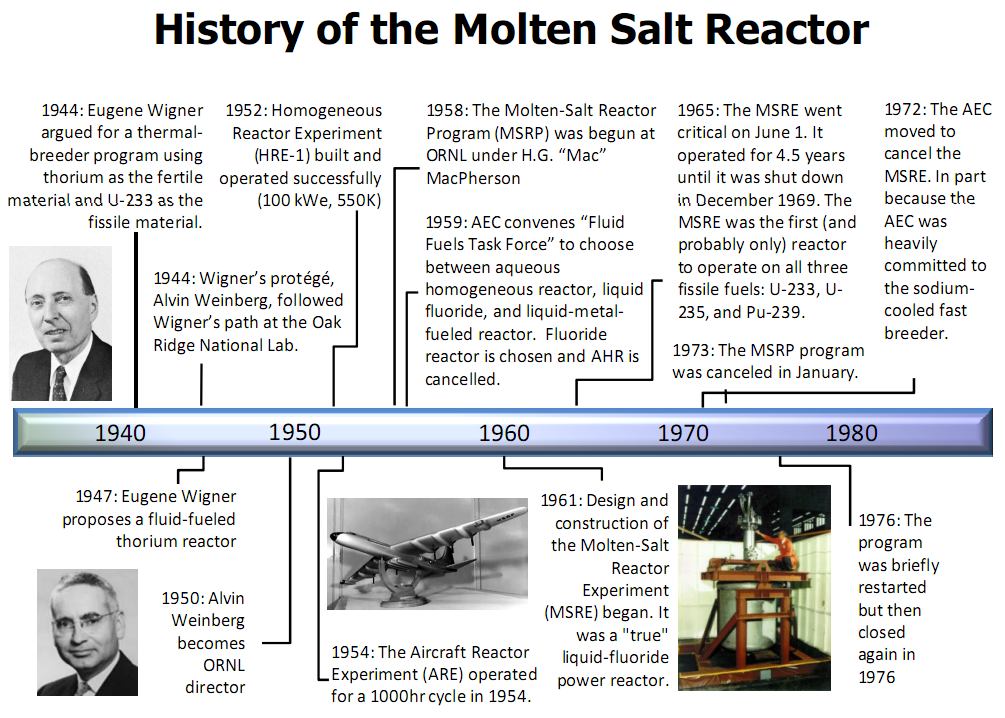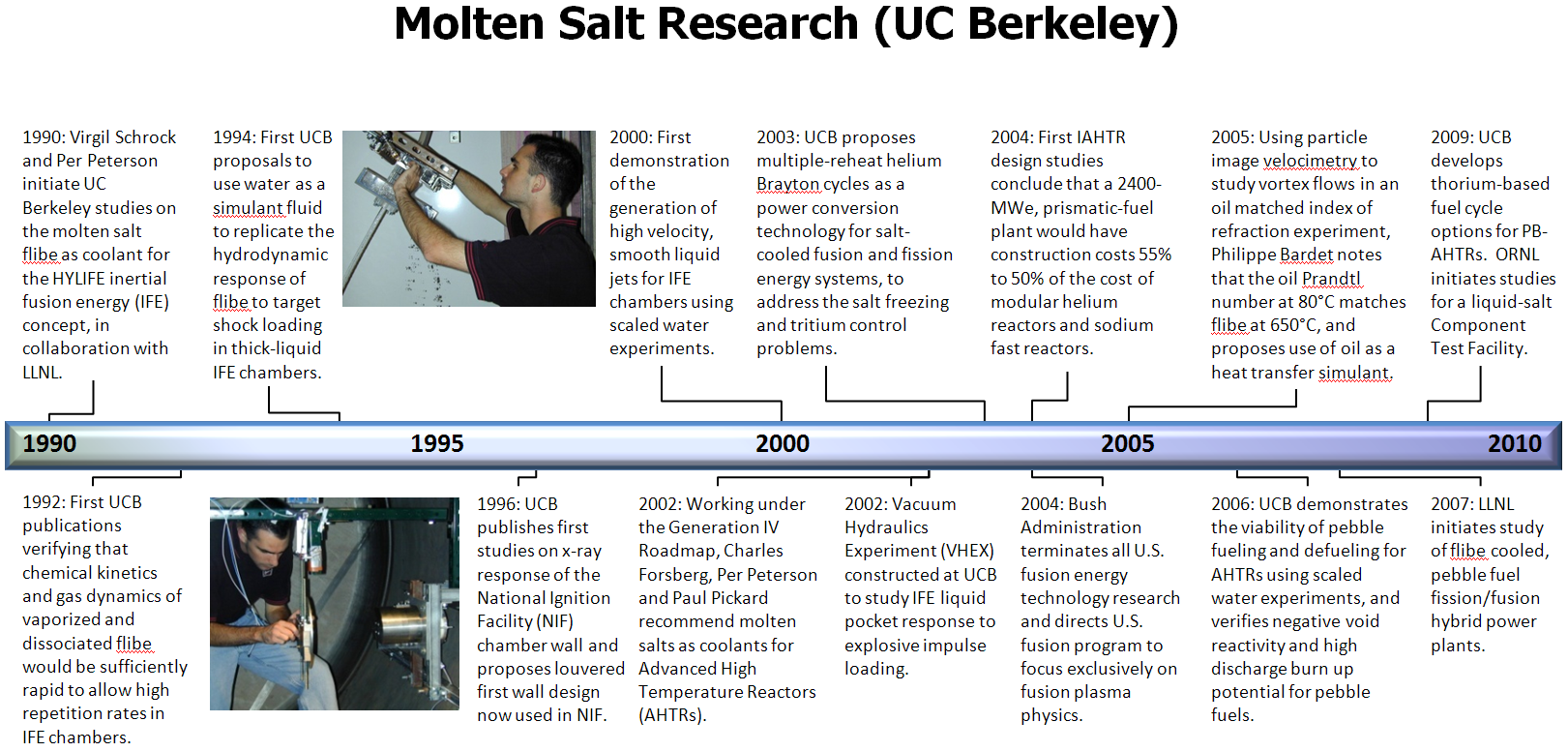Background
The history of the molten salt reactor began in 1944 with the proposition a thermal-breeder program using thorium as the fertile material and U-233 as the fissile material. Oak Ridge National Lab displayed interest in the idea of a fluid-fueled thorium reactor. The use of fluid fuels for use with high temperature reactors began to gain favor, and a small research reactor that was being designed for the Aircraft Nuclear Program was modified to serve as a testbed for the liquid-fluoride concept. The Aircraft Reactor Experiment (ARE) operated as the first molten salt reactor. The success of this program allowed ORNL to continue developing reactors leading to the Molten-Salt Reactor Program (MSRP). In 1961, design and construction of the Molten-Salt Reactor Experiment (MSRE) began. The MRSE went critical in 1965; however, the AEC cancelled the experiment in the mid-1970s.1,2
Molten Salt Research (UC Berkeley)
UC Berkeley involvement with Molten Salt began in 1990 with studies on the molten salt flibe as coolant for the HYLIFE inertial fusion energy (IFE) concept, in collaboration with Lawrence Livermore National Lab (LLNL). Research on IFE molten salt continued at UC Berkeley into the new millennium. In 2002, working under the Generation IV Roadmap, Charles Forsberg, Per Peterson and Paul Pickard recommended molten salts as coolants for Advanced High Temperature Reactors (AHTRs). Research emphasis has come to include pebble beds as a means of fueling and the development of thorium-based fuel cycle options for PB-AHTRs.



